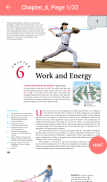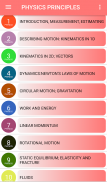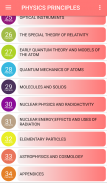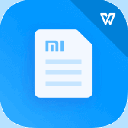










Physics - Principles With Applications Book

توضیحات Physics - Principles With Applications Book
The ultimate aim is to give students a thorough understanding of the basic concepts of physics in all its aspects, from mechanics to modern physics. A second objective is to show students how useful physics is in their own everyday lives and in their future professions by means of interesting applications to biology, medicine, architecture, and more.
1. MCQs are there at the end of each Chapter. They are not the usual type. These are
called MisConceptual Questions because the responses (a, b, c, d, etc.) are intended to
include common student misconceptions.
2. Search and Learn Problems at the very end of each Chapter, after the other Problems.
Some are pretty hard, others are fairly easy. They are intended to encourage students to
go back and reread some part or parts of the text, and in this search for an answer they
will hopefully learn more—if only because they have to read some material again.
3. Chapter-Opening Questions (COQ) that start each Chapter, a sort of “stimulant.” Each is
multiple choice, with responses including common misconceptions—to get
preconceived notions out on the table right at the start.
4. Digital. Biggest of all. Crucial new applications. Today we are surrounded by digital
electronics. How does it work? If you try to find out, say on the Internet, you won’t find
much physics: you may find shallow hand-waving with no real content, or some heavy
jargon whose basis might take months or years to understand. So, for the first time,
tried to explain:
• The basis of digital in bits and bytes, how analog gets transformed into digital,
sampling rate, bit depth, quantization error, compression, noise (Section 17–10).
• How digital TV works, including how each pixel is addressed for each frame, data
stream, refresh rate (Section 17–11).
• Semiconductor computer memory, DRAM, and flash (Section 21–8).
• Digital cameras and sensors—revised and expanded Section 25–1.
• New semiconductor physics, some of which is used in digital devices, including LED
and OLED—how they work and what their uses are—plus more on transistors
(MOSFET), chips, and technology generation as in 22-nm technology (Sections 29–9,
10, 11).
5. New topics, new applications, principal revisions.
• You can measure the Earth’s radius (Section 1–7).
• Improved graphical analysis of linear motion (Section 2–8).
• Planets (how first seen), heliocentric, geocentric (Section 5–8).
• The Moon’s orbit around the Earth: its phases and periods with diagram (Section 5–9).
• Explanation of lake level change when large rock thrown from boat (Example 10–11).
• Biology and medicine, including:
• Blood measurements (flow, sugar)—Chapters 10, 12, 14, 19, 20, 21;
• Trees help offset CO2 buildup—Chapter 15;
• Pulse oximeter—Chapter 29;
• Proton therapy—Chapter 31;
• Radon exposure calculation—Chapter 31;
• Cell phone use and brain—Chapter 31.
• Colors as seen underwater (Section 24–4).
• Soap film sequence of colors explained (Section 24–8).
• Solar sails (Section 22–6).
• Lots on sports.
• Symmetry—more emphasis and using italics or boldface to make visible.
• Flat screens (Sections 17–11, 24–11).
• Free-electron theory of metals, Fermi gas, Fermi level. New Section 29–6.
• Semiconductor devices—new details on diodes, LEDs, OLEDs, solar cells, compound
semiconductors, diode lasers, MOSFET transistors, chips, 22-nm technology (Sections
29–9, 10, 11).
• Cross section (Chapter 31).
11. This Book is Shorter than other complete full-service books at this level. Shorter
explanations are easier to understand and more likely to be read.
12. Cosmological Revolution:With generous help from top experts in the field, readers
have the latest results.


























